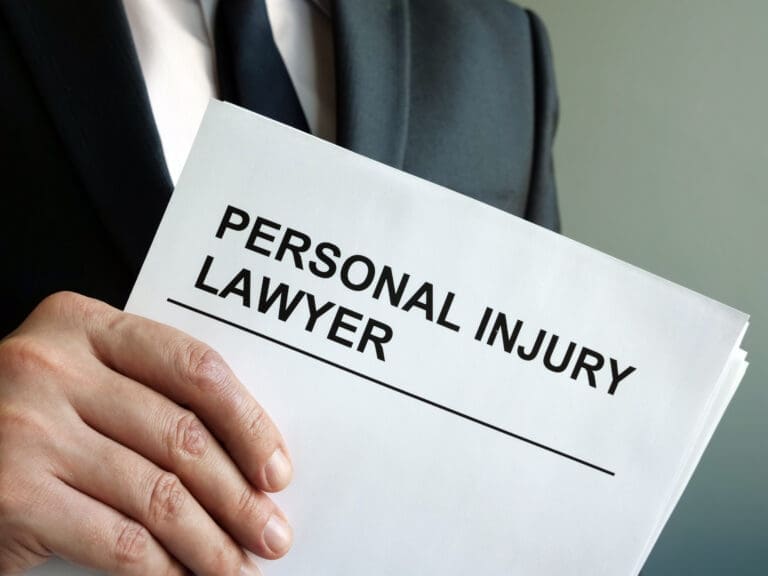
The American legal system’s approach to hate crime enhanced penalties is a study in the balance between federal authority and state sovereignty, reflecting the nation’s deep commitment to both civil rights and the rule of law. The Hate Crime Enhanced Penalties: Federal vs. State Prosecution Guide is not just a technical roadmap for attorneys and judges—it is a window into how society defines, prosecutes, and punishes acts that strike at the heart of community cohesion. As hate crimes have become a focal point in public discourse, understanding the legal frameworks that govern their prosecution is essential for anyone engaged in the legal industry, law enforcement, or public policy.
At the federal level, hate crime laws are rooted in the principle that certain acts, when motivated by bias against protected characteristics, inflict harm not only on individuals but on entire communities. The Matthew Shepard and James Byrd Jr. Hate Crimes Prevention Act stands as the cornerstone of federal hate crime legislation. Codified at 18 U.S.C. § 249, this law makes it a federal felony to willfully cause or attempt to cause bodily injury to any person because of their actual or perceived race, color, religion, national origin, gender, sexual orientation, gender identity, or disability. The law’s use of “actual or perceived” is significant, extending protection even to those mistakenly targeted due to bias, and ensuring that the intent behind the act, rather than the accuracy of the perpetrator’s perception, is what matters most.
Federal hate crime prosecution is not automatic; it is reserved for cases where state authorities are unable or unwilling to secure justice, or where the crime involves interstate commerce or occurs on federal property. This dual-jurisdiction approach respects the traditional primacy of state law in criminal matters while providing a federal backstop for the most egregious or complex cases. The penalties for federal delitos de odio are severe, ranging from up to ten years in prison for most offenses, to life imprisonment or even the death penalty in cases involving murder, kidnapping, or aggravated sexual abuse. The federal system also allows for substantial fines, reflecting the gravity with which these offenses are viewed.
States, meanwhile, have developed their own robust frameworks for addressing hate crimes, often going beyond federal statutes in both scope and specificity. Forty-five states and the District of Columbia have enacted hate crime penalty-enhancement laws, many modeled after the Anti-Defamation League’s template. These laws typically reclassify underlying offenses to a higher degree when bias motivation is proven. For example, a misdemeanor assault may be elevated to a felony if it is found to be a hate crime, resulting in longer prison terms and higher fines. Some states, like Florida, have a clear statutory ladder: a second-degree misdemeanor becomes a first-degree misdemeanor, a first-degree misdemeanor becomes a third-degree felony, and so on, with each step up carrying more severe consequences.
The range of protected classes under state law can be broader or narrower than federal law. While race, religion, and national origin are universally protected, some states add categories such as age, political affiliation, or even homelessness. This patchwork reflects the federalist principle that states are laboratories of democracy, free to tailor their laws to local values and needs. However, it also creates disparities in protection and prosecution, with some states offering more robust remedies than others.
Hate crime enhancements are not merely symbolic. They have a tangible impact on sentencing. In practical terms, a conviction for a bias-motivated assault might double the prison time compared to a non-bias-motivated offense. In states like Alabama, mandatory minimum sentences for hate crimes are set by statute, ensuring that offenders face significant consequences. In California, hate crime enhancements can add one to three years to a felony sentence, and certain hate-motivated acts—such as terrorizing with symbols or targeting places of worship—carry their own specific penalties.
The legal rationale for these enhancements is rooted in the recognition that hate crimes inflict unique harm. They are not just offenses against individuals, but attacks on the social fabric, sending a message of fear and exclusion to entire communities. The Supreme Court has upheld the constitutionality of hate crime enhancements, provided they target conduct rather than mere speech or thought. In Wisconsin v. Mitchell, the Court affirmed that penalty enhancements for bias-motivated conduct do not violate the First Amendment, so long as the law is carefully drafted to avoid criminalizing protected expression.
Proving a hate crime, however, is a complex endeavor. Prosecutors must establish not only the underlying criminal act but also the specific intent to target the victim because of a protected characteristic. This often requires evidence of bias, such as slurs, symbols, or prior statements, and can be complicated by the need to distinguish between hateful thoughts and criminal conduct. The burden of proof is high, and defense attorneys frequently challenge the sufficiency of the evidence regarding motive.
The interplay between federal and state prosecution is a defining feature of the American approach to hate crimes. Federal authorities may step in when state prosecution is inadequate, when the crime crosses state lines, or when the offense involves federally protected activities such as voting or attending school. The Shepard Byrd Act and related statutes empower the Department of Justice to pursue cases that might otherwise fall through the cracks, ensuring a national standard of accountability. However, federal jurisdiction is not unlimited; it is typically invoked only in the most serious or high-profile cases, or where there is a compelling federal interest.
Recent years have seen a marked increase in both the reporting and prosecution of hate crimes, driven by heightened public awareness and legislative reforms. The Justice Department has prioritized hate crime enforcement, launching initiatives to improve data collection, support victims, and provide training to local law enforcement. The COVID-19 pandemic, in particular, saw a surge in anti-Asian hate crimes, prompting new federal efforts to address bias-motivated violence and improve community outreach.
Technology is playing an increasingly important role in both the commission and prosecution of hate crimes. Social media platforms have become arenas for both the spread of hate and the gathering of evidence. Law enforcement agencies now use predictive analytics, surveillance systems, and data-sharing platforms to identify high-risk zones, monitor extremist content, and coordinate cross-jurisdictional efforts. These tools enhance the ability to prevent and respond to hate crimes, but they also raise important questions about privacy and civil liberties.
The trend toward expanding the definition of hate crimes to include online conduct is gaining momentum. Legislators are considering how to address cyberbullying, virtual harassment, and the proliferation of hate speech in digital spaces. As the law evolves, it will need to balance the imperative to protect vulnerable communities with the constitutional guarantees of free expression and due process.
Civil remedies are another important aspect of hate crime law. Many states allow victims to sue perpetrators in civil court, seeking damages for emotional distress, property loss, and other harms. These lawsuits can provide a measure of justice and deterrence beyond the criminal process, particularly in cases where criminal prosecution is not feasible or successful.
The conservative legal perspective on hate crime enhancements emphasizes the importance of clear statutory language, due process, and the presumption of innocence. There is a recognition that while hate crimes are uniquely harmful, the law must avoid overreach and ensure that enhancements are applied only when bias motivation is proven beyond a reasonable doubt. Judicial restraint and respect for state autonomy are guiding principles, with federal intervention reserved for cases where state remedies are insufficient.
Sentencing for hate crimes is shaped by a range of aggravating factors, including premeditation, use of weapons, and victim vulnerability. Courts consider not only the harm to the individual victim but also the broader impact on the community. High-profile cases often attract significant media attention, raising public awareness and reinforcing the message that hate-driven violence will not be tolerated.
The future of hate crime legislation is likely to involve continued efforts to standardize definitions, strengthen penalties, and improve reporting. There is growing support for a unified national definition of hate crimes, which would reduce disparities between states and ensure consistent application of justice. Stricter sentencing guidelines and increased federal oversight are also under consideration, particularly in response to the persistent rise in reported incidents.
Community engagement and education are essential components of any effective strategy to combat hate crimes. Law enforcement agencies are working with community organizations to build trust, encourage reporting, and provide support to victims. Public awareness campaigns, school programs, and training for first responders all play a role in fostering a culture of inclusion and respect.
En Hate Crime Enhanced Penalties: Federal vs. State Prosecution Guide is more than a legal reference—it is a reflection of the nation’s ongoing struggle to reconcile the ideals of liberty, equality, and justice. By understanding the legal frameworks, sentencing intricacies, and challenges in prosecution, legal professionals and the public alike can contribute to a more just and resilient society. The law’s response to hate crimes will continue to evolve, shaped by changing social norms, technological innovation, and the enduring commitment to protect the dignity of every individual.
Citations:
- Justice Department Hate Crime Laws
- Federal Hate Crime Overview
- Hate Crime Enhancements in Sentencing
- VOA News on Hate Crimes
- Miami Hate Crime Offenses
- Hate Crime Laws and Penalties
- Federal and State Hate Crime Protections
- Punishment for Hate Crimes
- Hate Crime Laws 50-State Survey
- Hate Crimes Federal or State
- ADL Approach to Hate Crime Laws
- Congressional Report on Hate Crimes
- Wikipedia on US Hate Crime Laws
- Learn About Hate Crimes
- Brennan Center on State Hate Crimes
- Hate Crime Punishments Guide
- LGBT Hate Crime Laws Map
- Guide for Prosecuting Hate Crimes
- UK Racial Hatred Offences
- FAU on Hate Crime Legislation
- FBI Hate Crime Investigations
- NAACP Hate Crime Laws by State
- Federal Hate Crime Evidence Standards
- Hate Crime Case Examples
- Criminalizing Hate Crimes Solution
- IACP Hate Crime Policy Summit
- CPS Recent Hate Crime Prosecutions
- TRAC Reports on Hate Crimes
- Oxford Book on Hate Crimes
- Justice Department Hate Crime Prosecutions
- DC Metropolitan Police Hate Crimes
- First Amendment Analysis of Hate
- California AG Hate Crime Guidance
- Are All Crimes Hate Crimes
- NIJ Report on Hate Crimes
- Wikipedia Overview of Hate Crimes
- Variations in Hate Crime Cases
- BJA Report on Hate Crimes
- YouTube Video on Hate Crimes
- FBI Federal Civil Rights Statutes
- SSRN Paper on Hate Crimes
- OSCE Report on Hate Crimes
- Stanford Alternative to Hate Crimes
- OSCE Guide on Hate Crimes
- Chicago Law on Hate Crimes
- Georgetown Law on Hate Crime Evidence
- Drake Law Review on Hate Crimes








